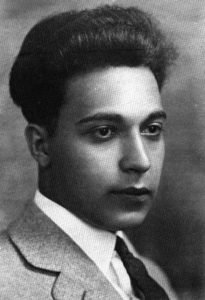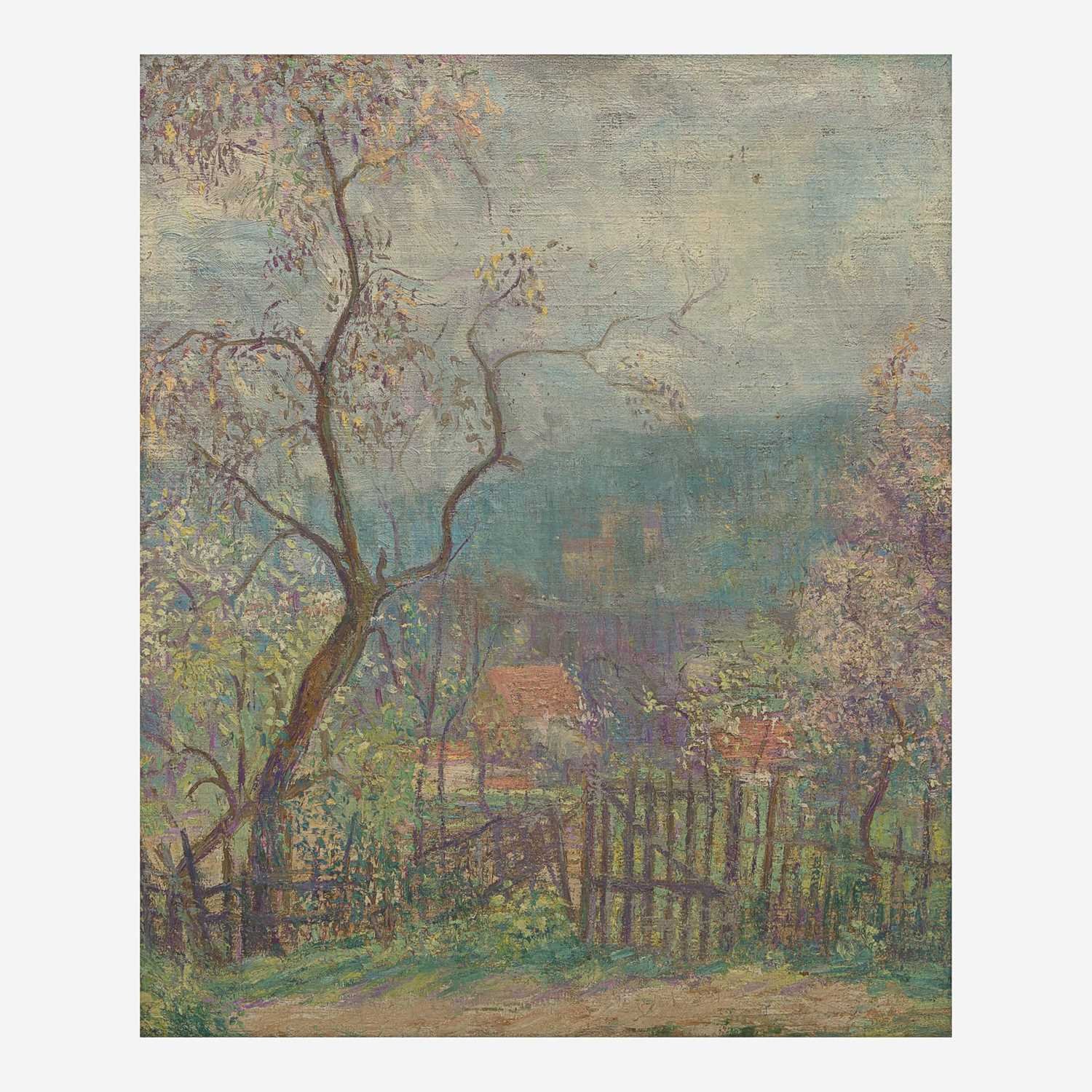
The life of artist Manuel Azadigian, who was once referred to by a retrospective in Ararat Magazine as the “Forgotten Genius,” is like a scene out of a Hollywood drama. A son of Armenian immigrants, Azadigian’s artistic talents and determination earned him the chance to study in Jazz Age Paris and Rome. His story, however, reached a sudden and tragic climax in 1924 at the Gatsbyan estate of a silent film star, where he collapsed and soon died of a rare cancer at just 22 years old. In another cruel twist of fate, his complete life’s work of paintings disappeared, further consigning this lost talent to obscurity. Almost a century after his untimely death, a rare piece from Azadigian’s body of work has been discovered and will be going under the hammer next month. This unexpected opportunity is one that art-loving Armenian-Americans must seize, both to secure this piece of cultural heritage and to ensure the “Forgotten Genius” is forgotten no longer.
Born in Malatya in 1901, Azadigian and his family emigrated to the US in 1912 in the lead-up to the Genocide. Immigrant life in Philadelphia was difficult. Azadigian had to drop out of high school at age 15 and worked in a factory to help support his family, but he never gave up on his dedication to art. His perseverance ultimately earned him admittance to the Pennsylvania Academy of the Fine Arts (PAFA), the nation’s oldest art school. He was later sponsored by philanthropist Arshag Karagheusian to continue his studies in Europe, a requirement at the time for any American aspiring to be a serious artist. He received acclaim from his exhibitions and profiles in French publications and Teotig’s Armenian almanac.
Shortly after his return to the US, he opened a New York studio in April 1924. Then came his big break—a commission to paint the portrait of Hazel Dawn, one of the day’s leading actresses. It was while painting Dawn at her estate on the shore of Long Island’s Oyster Bay that he collapsed from what proved to be terminal cancer; he died a month later. The paintings in his studio were packed and shipped back to Philadelphia but mysteriously disappeared in transit. A few surviving paintings remained in his family’s possession, which the artist’s sister later donated to his alma mater. Yet, PAFA has no record of this donation and is unaware of what happened to these last examples of his work.

Those who remembered Azadigian never gave up on their dedication to his legacy. Dawn, for example, used her star power to publish a feature story about his talent in the New York Graphic just months after his death. She reflected:
“It is one of the ironies of fate that fame does not come to many men until they die. This is especially so of the old masters. And I believe with all my heart and soul that someday, the name of Manuel Azadigian will be passed reverently from mouth to mouth, and that in the not far distant future, the connoisseurs of the art world will vie with one another to obtain possession of Manuel’s paintings.”
That dream was rendered impossible through the loss of Azadigian’s works. But admirers and relatives, like Margaret Kalalian, have been working hard to preserve his legacy and solve the mystery of the missing paintings. Indeed, their efforts seem to have led to the resurfacing of this painting from an unknown private collection. The untitled work has been listed by the auction house under the name Spring in the Valley, though it could line up with a work from his catalog entitled The Early Spring. Painted in 1923 during his time in Paris, it depicts a bucolic village scene. The work is meaningful to Kalalian because it embodies her uncle’s talent, as well as their family history. “The death of my mother’s brother Manuel was traumatic for her, especially coming so shortly after their father passed away as well. It forced her to have to leave school as a young teenager to work in a factory to support her mother and younger brother,” she told the Weekly. “It’s important to continue discovering the existence of whatever paintings might still remain, as it validates his work and potential as a recognized artist of his time.”

Acquiring this work is also of great importance toward preserving Armenian-American cultural heritage. Here is a little known but compelling Armenian life story which intersects with important American institutions, artists and even a silent film star. According to social art historian at Oxford University Vazken Khatchig Davidian, Azadigian is one of many Diasporan Armenian artists whose stories deserve more attention and appreciation: “Ottoman Armenian artists and those in the early post-Genocide diasporas are either ignored or underrepresented in Armenian art history, as the 20th century Armenian gaze mainly from the Republic privileged Soviet Armenian artists. In the rare cases where their art production is discussed, any Ottoman context is shed as to not challenge the dominant canonical nationalist Armenian narrative that views anything to do with Turkey through the narrow prism of the 1915 Genocide.” Azadigian left Turkey prior to the Genocide, but his formative years in Malatya were spent unlocking his artistic talents, shaped by the same environment as eminent painter and Malatya native Sarkis Katchadourian a generation prior.
Davidian encourages Armenians to rediscover their art historical heritage by broadening their scope to include objects beyond traditional ethnographic items such as rugs, textiles and ceramics: “Acquiring pieces by Armenian artists, such as this Azadigian painting, and considering donating them to an Armenian museum or cultural institution, would recover fragments which can help reconstruct lesser-known aspects of our 20th century cultural experience as a people.”
The biannual Collect: American Art auction will take place Tuesday, June 7 at the storied Freeman’s, America’s oldest auction house. “Azadigian’s work appealed to us as we are particularly delighted to present works by artists with ties to our hometown of Philadelphia,” said Olivia Zvara, the collection’s head of sale. “Furthermore, Azadigian was a student at the Pennsylvania Academy of Fine Arts under instructors Daniel Garber and Robert Vonnoh, both of whom are regularly featured in our American Art auctions. Drawing attention to artists like Azadigian and other PAFA alumni not only appeals to our local audience, but also solidifies Philadelphia’s place as the nucleus of American art history.” He will be featured alongside renowned artists like Thomas Hart Benton, Andrew Wyeth and Garber, who had once written to his former pupil that his outstanding artistic talents would lead to a successful career. While that was not to be, perhaps this can be the opening of a new chapter in the life and legacy of Manuel Azadigian.
Those interested in organizing an effort to save this painting for the Armenian-American community may contact the author at paul.sookiasian@gmail.com



Wonderful article
Thank you Paul Sookiasian, to collect
all this heartbreaking information about
painter Manuel Azadigian who died at a very-very young age…
You are encouraging the Armenians who have money
to enter the auction and buy one of his painting not to get lost.
Recently an Armenian bought the painting of Marlin Monro paying 193,000 Million Dollars, I think… Thus, someone should contact him directly to buy the Azadigian painting … He will be honored to keep such a painting in his home …
Thank you Paul for writing this soulful article about a painter we lost him unluckily …
Thank you…